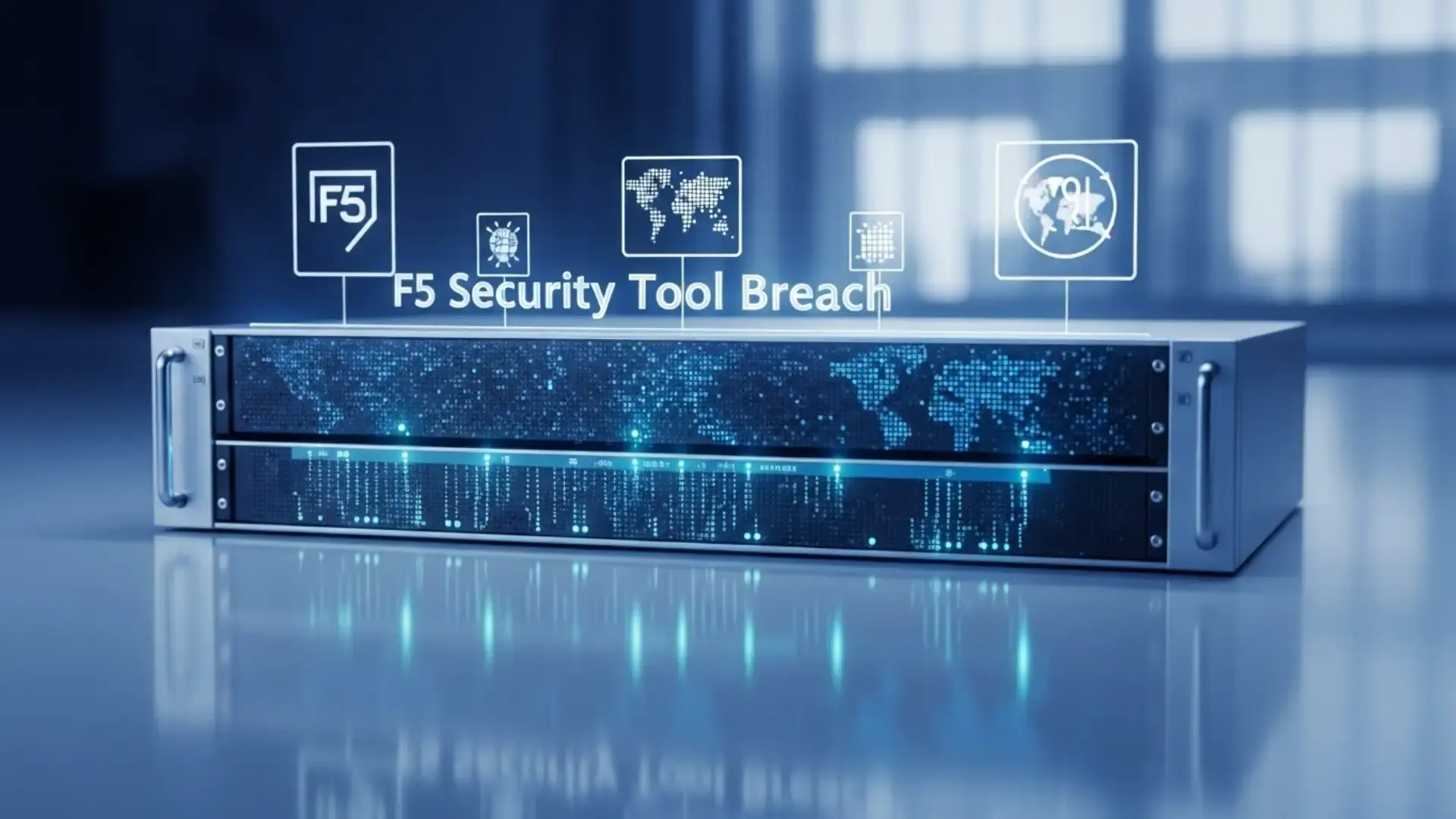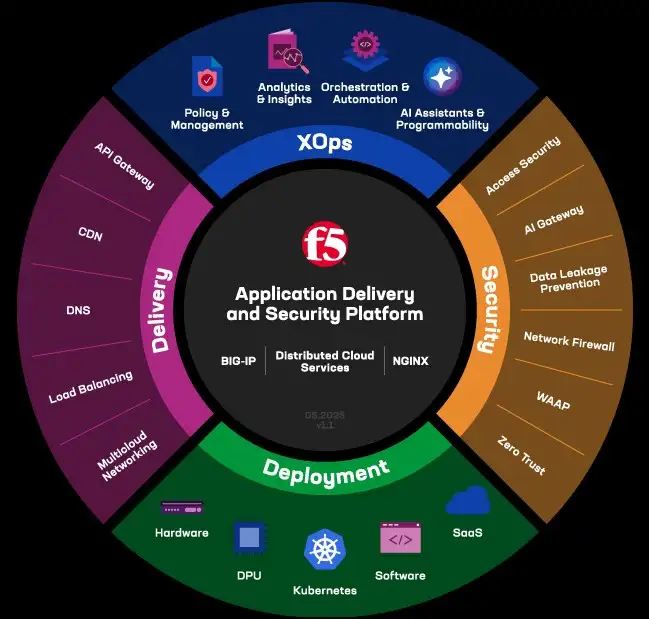F5 Security Tool Breach Puts Networks at Risk

Hoplon InfoSec
26 Oct, 2025
Last month, a part of the internet that most people don't think about very often turned into a national emergency. A trusted vendor's internal systems were hacked, and parts of networking brainwork were stolen. U.S. cyber defenders rushed to stop a threat that could have let attackers see behind the scenes of many secure sites. This is the story of how F5 security tools were hacked, why Washington issued an emergency order, and what businesses should do next.
What happened, in simple words?
In early August, F5's security teams found that someone had been able to access internal systems without permission for a long time. The hacker took away development files and some of the BIG-IP source code. That's important because those files explain how products work and can show bugs that hackers could use to make real exploits.
The Cybersecurity and Infrastructure Security Agency then issued Emergency Directive ED 26-01, which told federal civilian agencies to quickly take stock of, patch, or get rid of any F5 appliances that were affected.
There were two related facts that made it urgent. First, the data taken included unpublished information about vulnerabilities that could be used as weapons quickly. Second, the actor is thought to be part of a group that is linked to a nation-state, which makes targeted attacks and spying more likely. That combination made a business incident a matter of national security.
Why F5 products are major targets
For many businesses, F5 devices and management systems are at the front line. They take care of web application firewalls, traffic shaping, load balancing, and VPN services. If an attacker knows about a flaw in those systems that hasn't been made public, they can get around protections, intercept traffic, or get into networks that organizations thought were separate and safe. That's why a breach that affects F5 software and tools has effects that go beyond just one vendor.
Look at it this way. If your mailman suddenly gave a thief the master key to a bunch of apartment buildings, you wouldn't wait for the thief to try the lock. You would change the locks and keep an eye on who came and went. That's basically what CISA told federal agencies to do: take stock, fix, and strengthen before exploitation happens.
Impact of U.S. emergency directive on response
The order from CISA is clear and has a deadline. Agencies must quickly list all affected F5 systems, hide management interfaces from the public, speed up the process of applying vendor updates, and disconnect hardware that isn't supported. You also need to tell CISA about your inventories and how you fixed them. The directive sets strict deadlines for updates and follow-ups, showing that the threat is thought to be very real.
Those instructions are more than just a list of things to do. They show real attack paths. Exposed management planes and old firmware are the easiest targets for attackers, so the quickest way to lower immediate risk is to remove exposure and patch. Several security companies and product teams have put out playbooks to help network teams find and fix systems that are affected.
Timeline & attribution: knowns vs unknowns
F5 said that the activity was found in August after what it called "long-term, persistent access." According to government reports, the emergency directive was issued in mid-October. Some investigators are blaming the attack on people connected to the Chinese government, according to news sources.
However, attribution work is still going on and is being done with care. F5 and U.S. agencies keep sending each other updates as the forensic work comes to an end.
Attribution is important for how we respond. A criminal group might want money or a chance to take advantage of someone.
A state-linked actor often seeks intelligence or long-term access, which alters the methods by which defenders pursue, surveil, and collaborate with law enforcement and allies. For now, the most common public opinions point to a smart actor who is connected to a nation-state.
Essential steps for F5 product users
If your network uses F5 systems, this breach should be a wake-up call. Here are some useful, prioritized steps based on advice from vendors, CISA, and best practices for responding to incidents:
1. Make a list of everything.
Make a full, up-to-date list of all of your F5 assets and instances, such as BIG-IP, BIG-IQ, F5OS, virtual appliances, and cloud instances. Check to see what firmware and versions each device runs and if they are still supported. This list is what all the follow-up work is based on.
2. Don't let the public see management plans.
If you can get to management interfaces from the internet, cut them off right away. Only managers should be able to use access controls, network segmentation, and VPNs. Cutting down on exposure makes the attack route less easy.
3. Quickly apply vendor updates or fixes.
Follow the advice and patch notes that F5 has published. If updates are available, plan quick, tested deployments. If updates aren't possible yet, use the recommended mitigations and compensating controls.
4. Unplug or stop using devices that aren't supported.
Hardware or software that is no longer supported often doesn't get security updates. You can either cut them off from important networks or get rid of them completely. The directive calls this out because systems that don't have support are easy targets.
5. Logs and threat hunting
Look through logs for strange administrative actions, configuration exports, or connections to strange IPs and domains. Think about using endpoint and network detection tools that focus on lateral movement and credential misuse.
6. Work with the police and vendors.
If you work for the federal government, you should follow the rules and deadlines in ED 26-01. When something happens, private companies should tell their information-sharing partners, Mandiant, CISA, and F5 support, and work closely with them. Sharing information quickly makes it less likely that attackers will find easy targets elsewhere.
The industry’s premier platform.Source

Supply chain risk and defense insights
This incident is another reminder that " attacks can start at the top, in vendor development environments. Even if you keep your own systems up to date, attackers can still find new ways to break into your systems if a vendor's internal tools are hacked. That's why defenders now use vendor patching along with stronger segmentation, zero trust access for management planes, and strict logging and monitoring.
You shouldn't rely on just one control when you use defense in depth. If a vendor tool isn't as strong, the other layers least privilege, network segmentation, anomaly detection, and quick incident response are still important. The F5 situation shows how important those extra layers are.
Risk timeline & next steps
The immediate risk window is busiest right after an attacker gets access to source code or information about a vulnerability. This is because exploit development can happen quickly. The emergency directive shortened the time frames: apply fixes quickly to make it harder for hackers to take advantage of the situation.
Even after patches, defenders should keep an eye out for strange scans, attempts to exploit new vulnerabilities, and probes aimed at high-value assets. As forensic work goes on, F5 and government agencies will send out updates.
Talking to customers & building trust
F5 said it found the activity in August and has been working with law enforcement and partners. Some reports say that the Justice Department let the public know about the delay for reasons of national security. To get people's trust back, you need to be open with them, give them quick advice on how to fix things, and keep them up-to-date. If you use F5 systems, make sure that vendors give you clear timelines and support for forensic help and fixing problems.
summary
This episode is both a wake-up call and a guide. The wake-up call is that vendor breaches can quickly expose a lot of the internet's infrastructure. The playbook is easy to understand but hard to follow: know where your critical infrastructure is, limit exposure, quickly apply vendor fixes, look for signs of compromise, and work with peers and authorities.
If you have F5 gear, think of the term "F5 security tool" as a red flag on your asset list. Check where those tools are, patch them, and act as if attackers are watching. If you are in charge of security in general, this is a chance to test how ready you are for an incident, tighten controls on the management plane, and make defense in depth more than just a slogan.
Hoplon Infosec’s Penetration Testing service finds and fixes security gaps before attackers can exploit them, helping keep systems like F5 security tools safe and resilient.
You can also read these important cyber security news articles on our website.
· Apple Update,
· Windows Fix,
· WordPress Issue .
For more Please visit our Homepage and follow us on X (Twitter) and LinkedIn for more cybersecurity news and updates. Stay connected on YouTube, Facebook, and Instagram as well. At Hoplon Infosec, we’re committed to securing your digital world.
Share this :